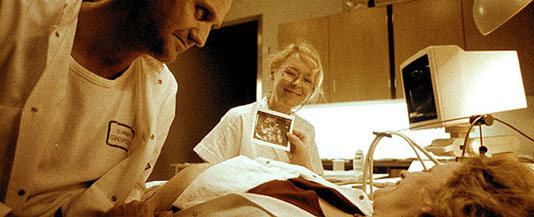|
|
Chapter Two: Riget IIBy Brett BeachOctober 28, 2010
Then the second half with the actors’ names kicks in. Driven by a pounding techno number apparently titled “The Seizure”, the footage, all pulled from random show episodes hits the eyes like the strobe lights at an Ibiza disco hot spot, and aims to induce just what the title says. Final analysis: Chaotic, jumbled, and flippant, but it’s got a beat and you can dance to it. Riget and Riget II are, first and foremost, soap operas of the medical variety, with all of the plot intrigues, illicit romances, and arrogant professionals that this implies. Von Trier plays all of these moments utterly straight. One’s first inclination might be to label them as parodies or heavy-handed satires but I don’t think that’s the intent. By grounding his show in the ordinary “reality” of the clichés of medical dramas and soap opera romances, von Trier paradoxically allows himself to more easily veer off into a carefully focused, but no less potent, escalating insanity. The characters are no deeper than a brief character synopsis might suggest, with very little in the way of back story. They are also completely acted on by the plot, warm and compassionate when required, cold, clinical and/or zombified as needed.
|

|
|
|

|
Friday, November 1, 2024
© 2024 Box Office Prophets, a division of One Of Us, Inc.


